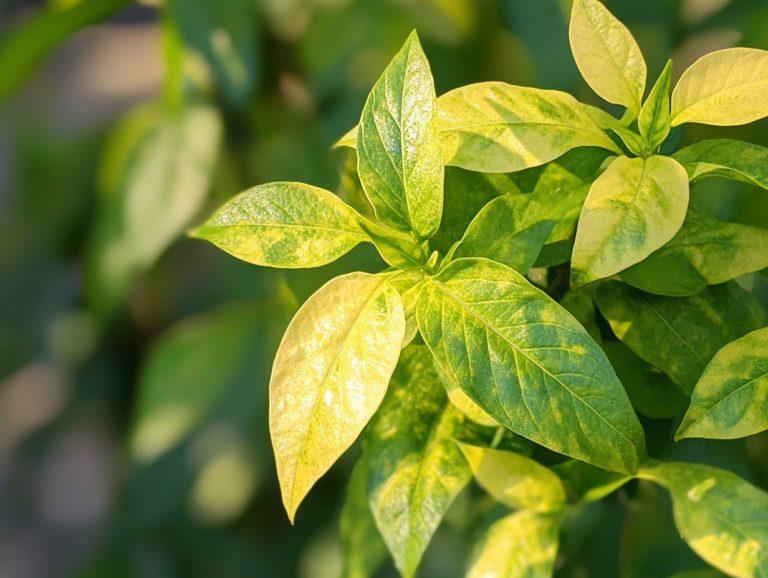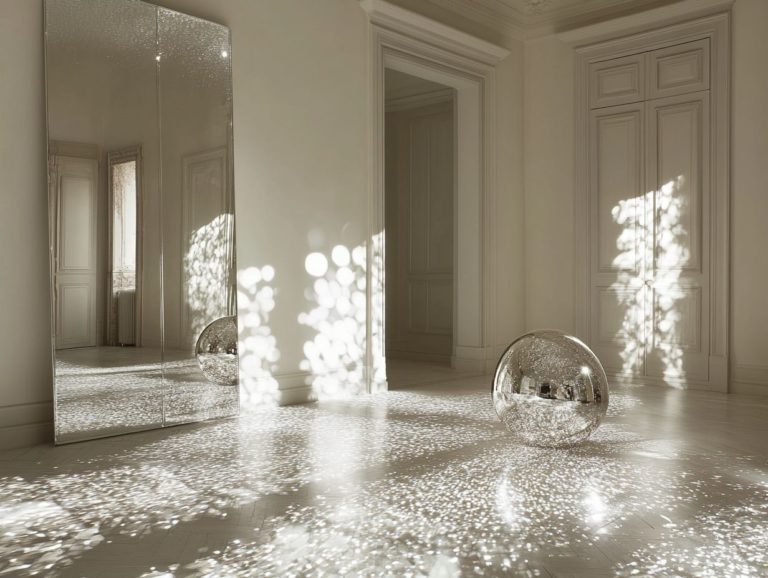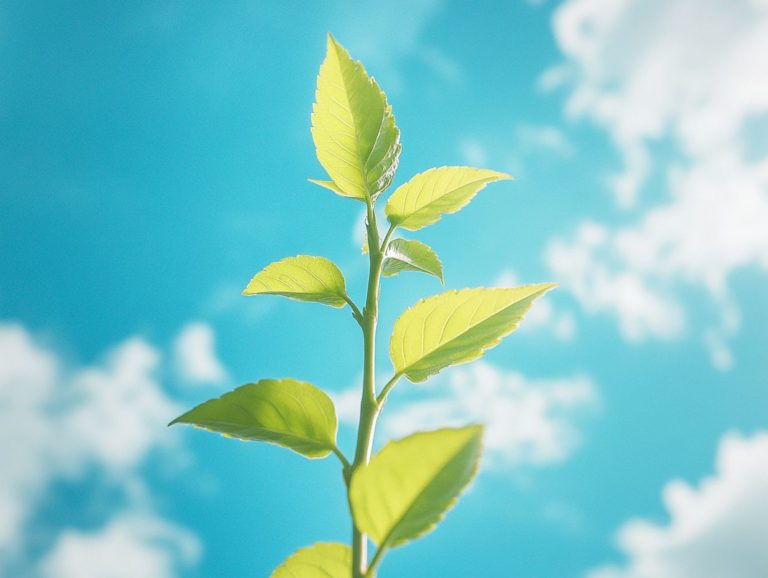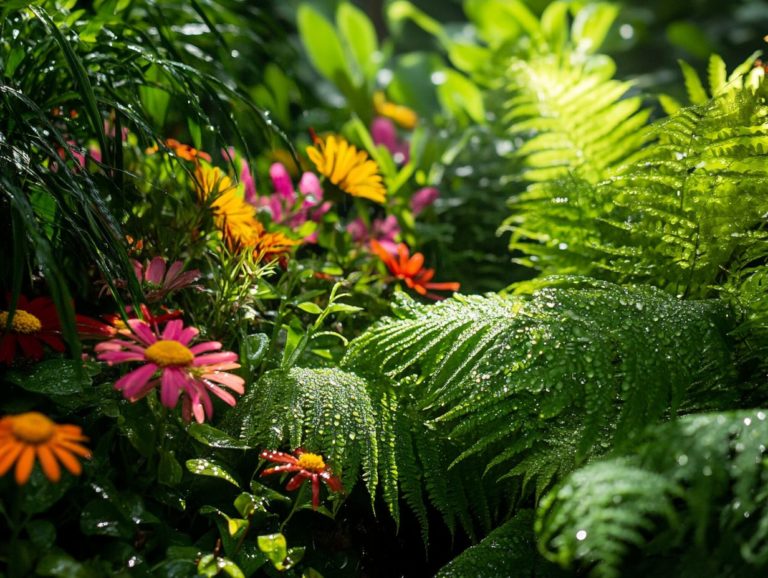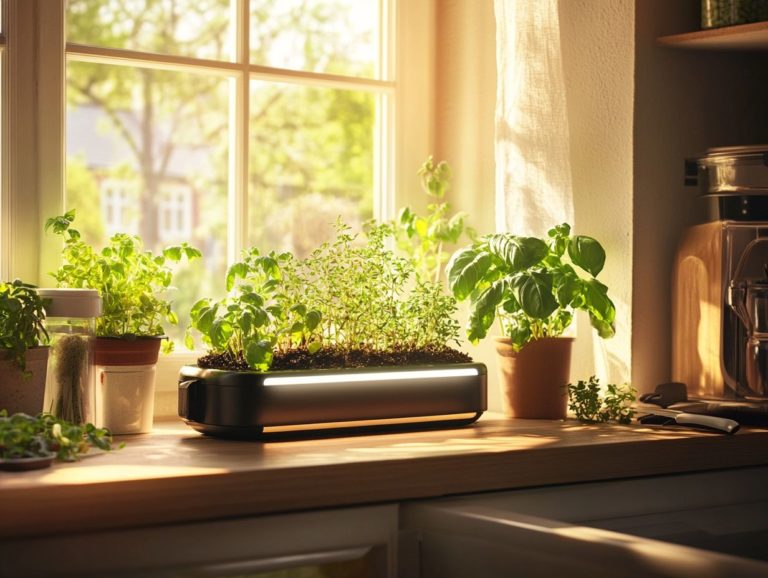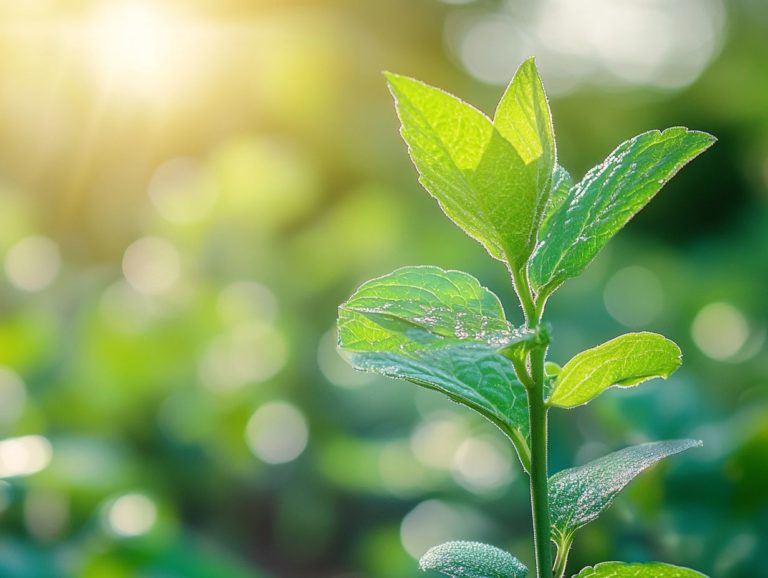Best Light Setup for Indoor Gardening
Creating a flourishing indoor garden starts with understanding what light your plants need.
Whether you’re a seasoned gardener or just starting out, providing the right light is crucial for your plants health.
This guide covers various topics, including natural and artificial light sources, DIY setups, and common pitfalls to avoid.
By the end, you’ll know how to create the perfect lighting for your indoor garden sanctuary!
Contents
- Key Takeaways:
- 1. Understanding the Lighting Needs of Indoor Plants
- 2. Types of Indoor Lighting Options
- 3. Natural Light Sources for Indoor Gardening
- 4. Artificial Light Sources for Indoor Gardening
- 5. Choosing the Right Light Spectrum for Your Plants
- 6. Factors to Consider When Setting Up Indoor Lighting
- 7. How to Calculate the Amount of Light Your Plants Need
- 8. Setting Up a DIY Indoor Light Setup
- 9. Common Mistakes to Avoid When Setting Up Indoor Lighting
- 10. Keep Your Indoor Lights Shining Bright!
- 11. How to Adjust Lighting for Different Stages of Plant Growth
- 12. Troubleshooting Common Issues with Indoor Lighting
- 13. Tips for Maximizing Light Efficiency in Indoor Gardening
- 14. Cost Comparison: Natural vs Artificial Lighting for Indoor Gardening
- 15. Is It Worth Investing in a Professional Indoor Lighting Setup?
- Frequently Asked Questions
- What is the best light setup for indoor gardening?
- How many hours of light do indoor plants need?
- Do I need to use grow lights for indoor gardening?
- What is the difference between LED and fluorescent grow lights?
- Can I use regular household bulbs for indoor gardening?
- How do I know if my plants are getting enough light indoors?
Key Takeaways:
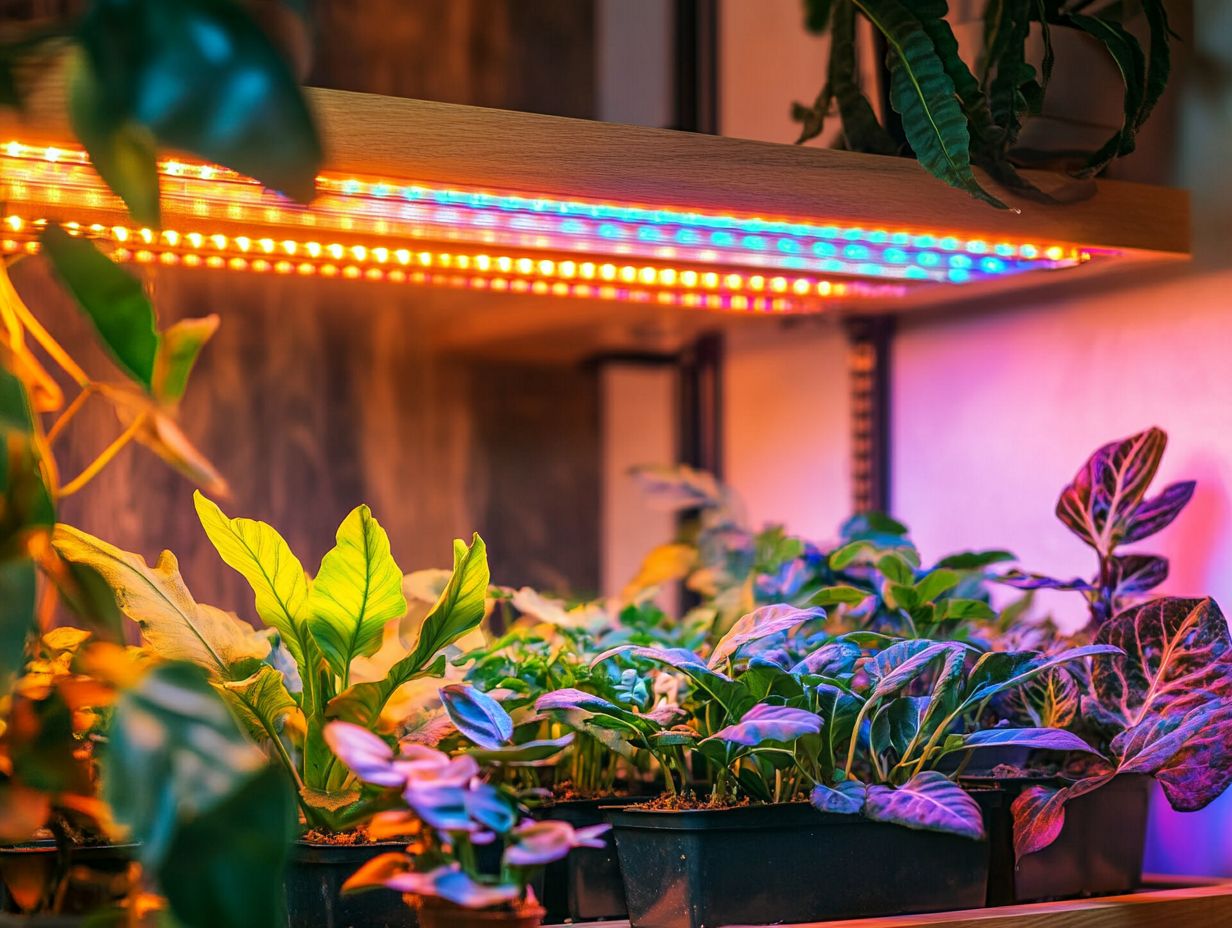
- Understanding the lighting needs of your indoor plants is crucial for their growth and health.
- Both natural and artificial light sources have their advantages; choosing the right spectrum is important for optimal plant growth.
- Proper maintenance and adjusting lighting for different stages of plant growth can save you from common mistakes and maximize light efficiency.
1. Understanding the Lighting Needs of Indoor Plants
Get ready to boost your indoor plants’ health by mastering their lighting needs!
Understanding the lighting needs of your indoor plants is essential. It nurtures their health and vitality, allowing them to flourish.
Different houseplants come with unique light requirements that can dramatically influence their growth. For example, while succulents and cacti enjoy bright sunlight, ferns and tropical plants thrive in more indirect light to avoid leaf scorch.
The light spectrum is also critical for photosynthesis, the process plants use to turn light into energy. Blue light encourages vigorous vegetative growth, while red light promotes flowering varieties.
Placement of your lights is key. The distance from your plants affects the intensity of light they receive. If the lights are too far away, you might end up with leggy growth; too close, and you risk burning those precious leaves.
With the right lighting setup, your indoor plants can flaunt vibrant colors from the lush greens of leafy varieties to the eye-catching reds and purples of blooming ones. Understanding lighting considerations for plant growth can transform your indoor space into a lively garden oasis.
2. Types of Indoor Lighting Options
In indoor gardening, you have a variety of grow light types available, including grow lights, LED lights, fluorescent lights, and incandescent lights. Each type offers its unique benefits tailored to different plant needs.
For instance, LED lights are celebrated for their energy efficiency and low heat output. They are a smart choice if you’re keen on keeping electricity costs down while still providing your plants with optimal light for growth. LED lights often last several years, resulting in lower replacement costs.
While fluorescent lights might seem budget-friendly, they tend to produce more heat and consume more energy over time. This makes them a good option if you have a larger plant collection and need immediate cost savings.
Incandescent lights can add a warm glow to your space, enhancing its aesthetic appeal. However, they typically lack efficiency and may not provide the ideal light spectrum for plant growth. Each lighting type has its strengths and weaknesses, so it all boils down to your specific needs and plant care setup.
3. Natural Light Sources for Indoor Gardening
Natural light sources are essential for your indoor gardening journey. They provide the energy needed for plant growth and photosynthesis while catering to the specific light requirements of various houseplants in your collection.
Optimize the light placement of these natural light sources to significantly elevate your indoor botanical experience. Positioning your plants near sunny windows can encourage them to thrive. Choose the right species, like succulents, spider plants, and pothos, to achieve remarkable results.
Don t wait! Optimize your plant lighting today to see them thrive.
Factor in seasonal changes and their impact on natural sunlight for your plants. As winter brings shorter days and less light, you may need to adjust your plant placement or even consider adding grow lights to ensure your indoor greenery continues to flourish year-round.
4. Artificial Light Sources for Indoor Gardening
Artificial light sources, like LED and fluorescent lights, offer a reliable way to ensure your indoor garden flourishes, regardless of outside conditions. This is especially important in regions where natural sunlight is scarce, such as during long winter months.
Selecting the right type of artificial lighting creates an optimal environment that encourages growth and vitality in your plants. LEDs are impressive for their energy efficiency and longevity, emitting a specific spectrum that benefits photosynthesis. Fluorescent lights, while less efficient, still provide a good spread of light, suitable for larger areas or certain plant varieties.
Understanding these distinctions helps you make informed choices that cater specifically to your plants’ needs, ensuring their safety.
5. Choosing the Right Light Spectrum for Your Plants

Choosing the right light spectrum for your plants is crucial. Different spectrums like red light for flowering varieties and blue light for vegetative growth significantly impact their development within your indoor garden.
Understanding each growth stage’s specific needs can dramatically enhance both plant vitality and yield. For example, during the germinating seeds phase, your plants flourish under blue wavelengths, promoting compact and sturdy growth. When transitioning to the flowering stage, introducing more red light effectively stimulates blooming and fruit production.
When selecting grow bulbs, consider LED options with adjustable height spectrums for flexibility. Opting for full-spectrum bulbs provides a well-rounded light source suitable for various growth phases, helping your indoor garden thrive with optimal health and productivity. Additionally, using light shades for indoor plants can enhance light distribution and further support their growth.
6. Factors to Consider When Setting Up Indoor Lighting
Consider these key factors to set up your indoor lighting effectively: light distance, adjustable height, and optimal placement. Each element maximizes energy efficiency while ensuring plant safety.
Understanding the needs of different plant types is essential, as each species thrives under varying light intensities and durations. For instance, succulents prefer light positioned about 12 to 24 inches away, while shade-loving plants benefit from more distant placement to avoid scorching.
The beauty of adjustable height features in lighting fixtures lies in their flexibility. This adaptability ensures that every plant receives adequate coverage, promoting healthier growth and mitigating issues related to uneven light distribution. By leveraging these systems, you can create an ideal microclimate thoughtfully designed for your plant companions.
7. How to Calculate the Amount of Light Your Plants Need
Calculating your plants’ light needs is essential for healthy growth. Consider their specific light requirements, how long they re exposed to light, and tools like a light timer to optimize performance.
Understanding the needs of each plant species and their various growth stages allows you to create a customized light schedule. For example, seedlings thrive on approximately 14-16 hours of light each day, while mature plants do well with slightly less. Use a light meter to assess light intensity and make necessary adjustments.
Tracking light exposure enhances your seed starting process and syncs with your watering routines. Plants basking in more light generally require moisture more frequently. This thoughtful approach fosters a balanced environment that supports healthy growth and effective watering routines.
8. Setting Up a DIY Indoor Light Setup
Setting up a DIY indoor light setup can be a truly rewarding endeavor. It enables you to harness grow lights and fixtures to craft an energy-efficient environment tailored to your plants’ specific needs.
By thoughtfully selecting the right types of grow lights such as LEDs or fluorescents you can ensure optimal growth while keeping energy consumption in check. Proper placement is key; hanging the lights at the ideal height helps plants get the light they need and prevents them from becoming leggy.
To elevate the aesthetic appeal of your setup, consider using vintage tins or antique tins as planters. This not only adds a unique touch but also aids in drainage and plant care. Careful planning around light cycles and using reflective materials enhances energy efficiency. Each step is integral to the success of your home gardening journey.
9. Common Mistakes to Avoid When Setting Up Indoor Lighting
Avoiding common mistakes when setting up indoor lighting is crucial for maintaining your plants’ health. Pay attention to factors like proper light distance and energy consumption; neglecting these can lead to problems.
In your eagerness to nurture your indoor plants, you might inadvertently provide either too much light or not enough. This can result in stunted growth or unsightly scorch marks. Different plants have varying light requirements some thrive in bright, direct light, while others prefer indirect sunlight.
To sidestep these pitfalls, invest in adjustable grow lights or position your plants at different distances from the light source. This creates an optimal environment. Incorporating timers can also help regulate light exposure, ensuring each plant receives just the right amount of illumination to flourish. For more insights on how to choose plants based on their needs, check out indoor light levels and plant selection.
10. Keep Your Indoor Lights Shining Bright!
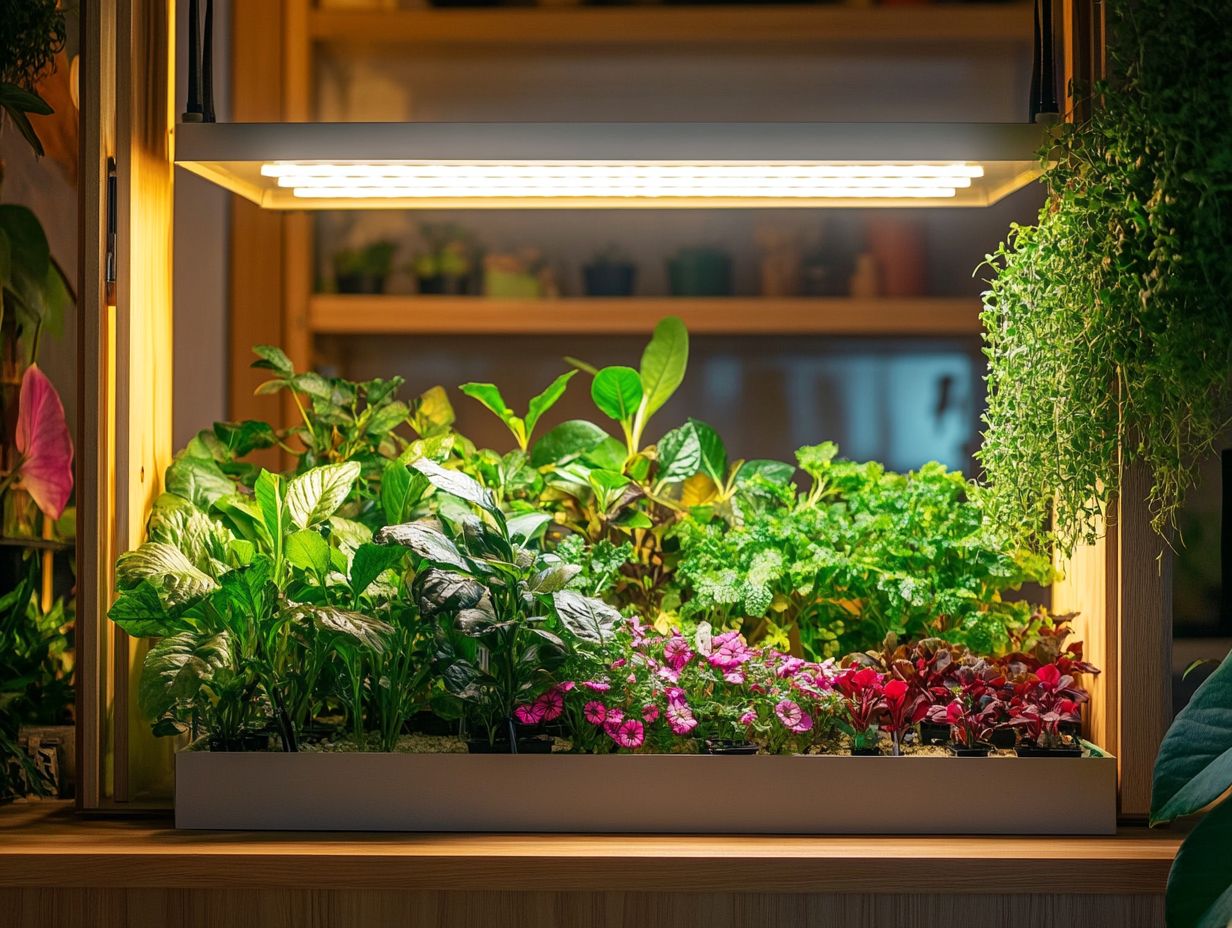
Regular maintenance and care for your indoor lighting system are essential for sustaining optimal performance. Ensuring that your light fixtures and bulbs function effectively enhances their energy efficiency.
- Establish a maintenance schedule that includes cleaning your light fixtures monthly.
- Check bulb efficiency every few months to identify underperforming bulbs.
- Regularly inspect for signs of wear, such as frayed wires or loose connections.
Addressing these issues promptly helps maintain safety and performance. By adopting these practices, you can extend the lifespan of your lighting system while contributing to a more sustainable environment through energy conservation.
11. How to Adjust Lighting for Different Stages of Plant Growth
Adjusting lighting for various stages of plant growth is crucial for nurturing optimal health. This guides you from the moment of germinating seeds to fine-tuning the light spectrum for flowering plants.
In the seed starting phase, your plants thrive best under bright, indirect light. This fosters sturdy, healthy stems while protecting delicate leaves from burning. As your seedlings mature, gradually increasing the light intensity will support stronger growth. For those cultivating orchids, understanding light management for indoor orchids is particularly beneficial, and fluorescent grow lights are well-suited for this stage.
During the vegetative phase, use a full-spectrum light that mimics natural daylight to encourage robust leafy growth. When your plants transition to the flowering phase, adjust the light spectrum to favor red wavelengths to stimulate blossoming.
Enhance flower development by increasing the duration of light exposure. This ensures your plants flourish with stronger blooms while remaining well-hydrated and nourished.
12. Troubleshooting Common Issues with Indoor Lighting
Troubleshooting indoor lighting issues is vital. It ensures your plants get the light they need while fixing issues like poor illumination, overheating, and high energy usage.
By monitoring the symptoms of insufficient light such as leggy or discolored growth you can make informed adjustments to your setup. It s also important to recognize that excess heat can impede plant development, so watch for signs like wilting or browning leaves.
Simple strategies, such as adjusting the distance of your grow lights or opting for bulbs that use less energy, can greatly enhance your plants’ health. Understanding the specific light requirements and temperature tolerances of different plant species will help you identify the optimal lighting tips for indoor herb gardens, ultimately fostering healthier growth and better health.
13. Tips for Maximizing Light Efficiency in Indoor Gardening
Maximizing light efficiency in indoor gardening is crucial for promoting healthy plant growth while managing energy consumption. Making strategic choices in your light setup should be a top priority.
To achieve this, employ various techniques, such as incorporating reflective surfaces that bounce light back onto your plants, effectively enhancing overall illumination. For more insights on optimal lighting, consider using the best light sources for indoor plants. Careful light placement is also key; positioning your grow lights at optimal distances ensures that your plants receive the right intensity without risking heat stress.
Choosing energy-efficient grow lights, like LEDs, not only saves you money but also extends the lifespan of your lights and reduces heat output. For optimal results, consider the best light arrangements for houseplants. Regularly monitoring light levels and adjusting them according to your plants’ growth stages is essential, ensuring that each plant receives the right amount of light for strong development.
14. Cost Comparison: Natural vs Artificial Lighting for Indoor Gardening
Understanding the cost comparison between natural and artificial lighting for indoor gardening enables you to make informed decisions that balance your plants’ needs with your budget, all while emphasizing energy consumption and sustainability.
By evaluating the initial setup costs alongside ongoing expenses, such as electricity usage, you can determine which option offers better long-term benefits. For example, leveraging windows or skylights can significantly reduce energy costs, providing your plants with the sunlight they crave without the burden of additional electric bills each month.
On the flip side, while artificial lighting systems like LED grow lights demand a higher initial investment, they deliver consistent light conditions throughout the year, making them a perfect choice for areas with limited natural sunlight. For more insights, check out how to use light for indoor vegetable gardens.
Act now to assess your unique situation and consider factors like the types of plants you’re growing, the natural light available, and your anticipated growing season to find the lighting solution that perfectly aligns with your gardening goals and sustainability initiatives.
15. Is It Worth Investing in a Professional Indoor Lighting Setup?
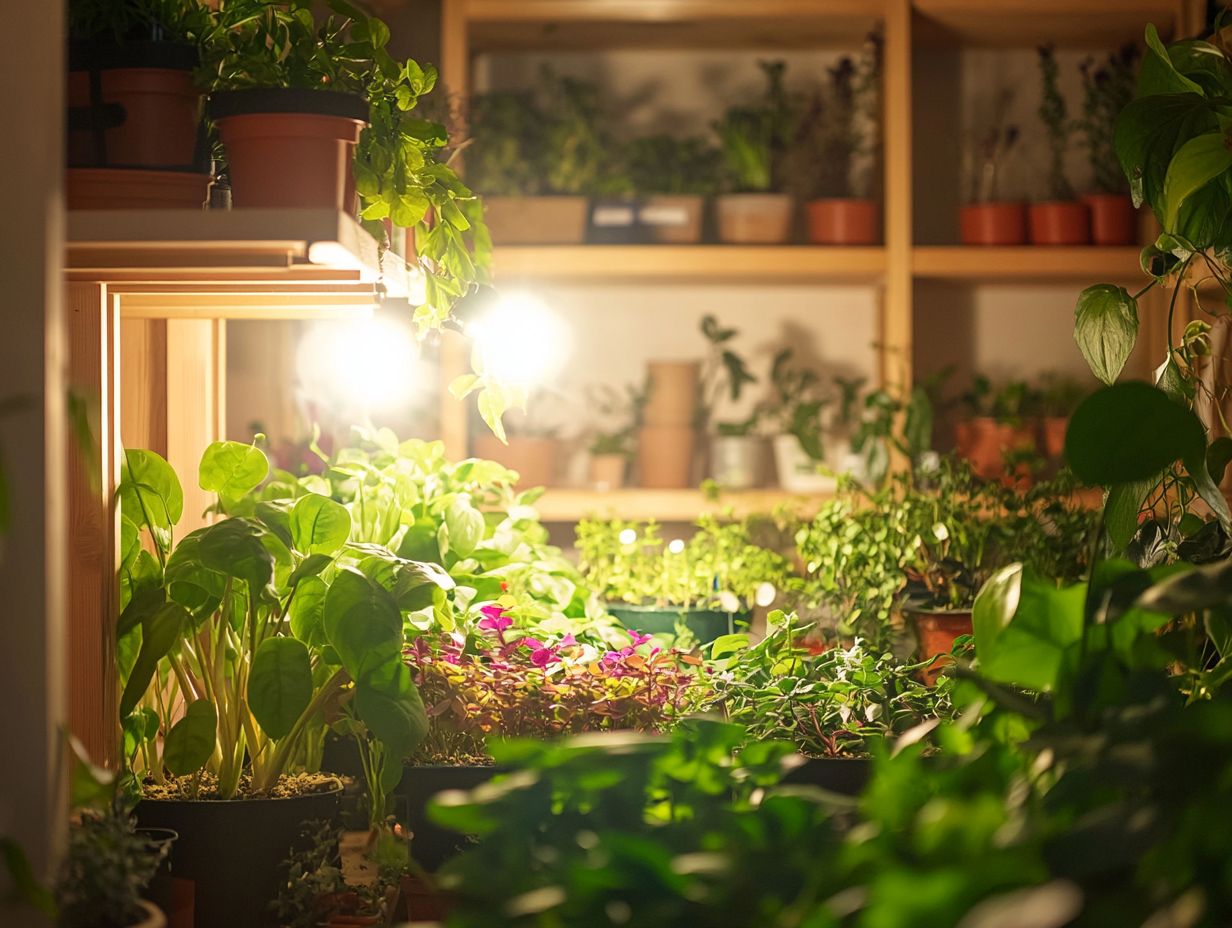
Thinking about a professional indoor lighting setup? It s a game-changer for any serious indoor gardener! It promises enhanced energy efficiency and optimized conditions for flourishing plant growth.
By utilizing high-quality fixtures, you can bask in the benefits of superior light quality that closely mimics natural sunlight, nurturing healthier plants and yielding stronger harvests. For more tips on using sunlight for indoor plants effectively, these advanced systems often use energy-efficient technologies that significantly reduce power consumption, potentially leading to noticeable savings on your monthly energy bills.
Not only does this benefit your budget, but it also aligns with sustainable gardening practices, making you a champion of eco-friendly cultivation. Over time, you’ll find that various plants and gardening styles thrive in the meticulously regulated environment offered by professional setups, resulting in long-term growth outcomes that may far surpass your initial expectations.
Frequently Asked Questions
1. What type of grow lights should I use?
2. How can I tell if my plants are getting enough light?
3. What are the benefits of energy-efficient lighting?
4. How often should I check my lighting setup?
What is the best light setup for indoor gardening?
Choosing the right light setup for indoor gardening depends on the plants you are growing and the size of your garden.
LED grow lights and full spectrum fluorescent lights are excellent choices. They provide the right type of light that helps plants grow.
How many hours of light do indoor plants need?
Most indoor plants require around 14-16 hours of light per day. However, it’s crucial to research the specific light needs for your plants, as some may require more or less light.
Do I need to use grow lights for indoor gardening?
While natural sunlight can work for indoor gardening, most plants will need additional grow lights. These lights ensure that your plants receive enough light for optimal growth.
Grow lights also give you more control over the light type and amount your plants get.
What is the difference between LED and fluorescent grow lights?
The primary difference between LED and fluorescent grow lights lies in the type of light they emit.
LED lights produce a specific light spectrum ideal for plant growth, while fluorescent lights emit a broader range that might not be as effective.
LED lights save energy and last longer than fluorescent lights!
Can I use regular household bulbs for indoor gardening?
No, regular household bulbs do not emit the necessary type of light for plant growth. They also lack the intensity and duration of light that plants need to thrive.
Investing in proper grow lights is essential for healthy plants!
How do I know if my plants are getting enough light indoors?
Don t wait until your plants are struggling! The best way to check if they re getting enough light is to monitor their growth and appearance.
If your plants are growing tall and weak, they re likely not getting enough light.
If they re leaning toward the light source or have yellowing leaves, they might be getting too much light.
Adjust the placement and duration of your grow lights as needed to ensure your plants get just the right amount of light!

